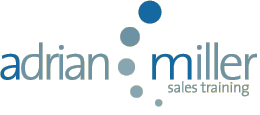7 Platform Tips to Punch Up Your Performance
I found this article by Diane DiResta to be incredibly helpful and hope that you do as well. Continuous self-improvement is the name of the game!
Performing is not about juggling balls in the air or acting on the big stage. Every presentation you give is a performance – even a meeting update! Whether your platform is a convention hall, a boardroom, or the kitchen table, good presentation skills can determine the quality of your performance and result in a successful outcome. Here are 7 platform tips to punch up your performance:
Pause strategically. The first pause you take is when you walk on the platform. Look at two people and silently connect. Allow for the silence and then make your opening remarks. Come to a full stop at the end of a sentence. Count 2 beats to yourself before moving on. For greater impact and to evoke emotions, hold the pause even longer. Pause to signal that a point is significant. If you fail to pause, your message will sound like one run-on sentence and the message won’t land. Speed talking translates as nervousness. Remember: power is never rushed.
Engage the group. Are you a talking head? Most audiences don’t like to be lectured. Savvy public speakers employ engagement techniques to draw attention and maintain interest. You can ask rhetorical questions, flash a photograph on the screen, tell a story, share a case study, create a discussion, or use polling software. Try getting the audience on their feet. Whatever technique you choose, be sure the audience is involved in your message.
Rehearse in the room. The best public speakers rehearse out loud and time themselves. But there is something about practicing in the actual meeting room that makes a difference. I can’t tell you why this works. I do know that every time I practice my speech or presentation in an empty room, I always feel more confident.
Find a friendly face. Maybe it’s the person who is smiling. Make an eye connection and deliver your opening line to that one person. Don’t try to convert the scowling face. That will shatter your confidence. Look at the receptive person and then move on to someone else. Keep looking at friendly faces.
Offer a challenge. Audiences have come to expect to be spoon fed. They lean back in their chairs and wait for you to enlighten them. It’s easy for them to expect the presenter to do all the work. After all, you’re the expert. You can turn the tables on them and challenge them. Begin your presentation with a challenge to shake them up. And end with a call to action and challenge them to keep their commitment.
Remember the rule of three. A well known principle of effective public speaking is the use of repetition. Martin Luther King used repetition in his I Have a Dream Speech. The speech originally had a different title but because he said “I have a dream” repetitively, it became known by that refrain. The advertising world employs repetition using the rule of three in commercials and jingles. Think of fairy tales – Three Little Pigs, nursery rhymes – Three Blind Mice, and movie titles – Three Men and a Baby. Craft your message with three agenda items, 3 main points, and three benefits, and you’ll be clear and memorable.
Mirror the audience. Have you ever hit it off with somebody right away? They were probably just like you. It’s the same with audiences. So how can you increase your likability? Mirror them. Notice their body position. How is their energy? Is it fast or slow? What kinds of words or expressions do they use? In one-to-one communication, mirroring is much easier but you can also mirror a large audience. If they are an extroverted sales team, you’ll want to raise your energy and volume. If they’re more scientific you’ll want to tone it down and provide more data.
I recently trained a group of economists in the U.K. and I was in full presentation mode, as I projected my voice and increased my energy. This group was more soft-spoken. During a break, the leader explained that the energy level was quieter in this U.K. company. “So I would be considered loud?” I asked. “Yes!” he answered. What a surprise! In the U.S. I’m considered more soft spoken than some of my peers. I returned to the meeting and toned it down. The meeting was a success.
To punch up your presentations remember to P.E.R.F.O.R.M.
